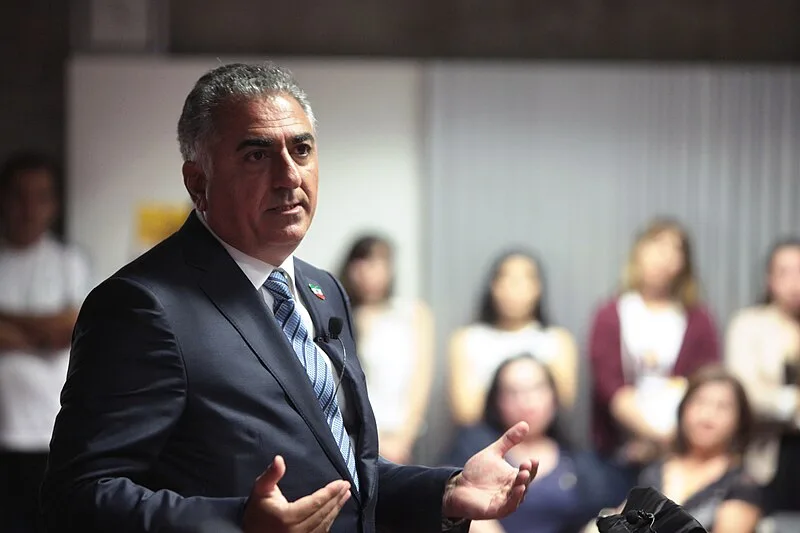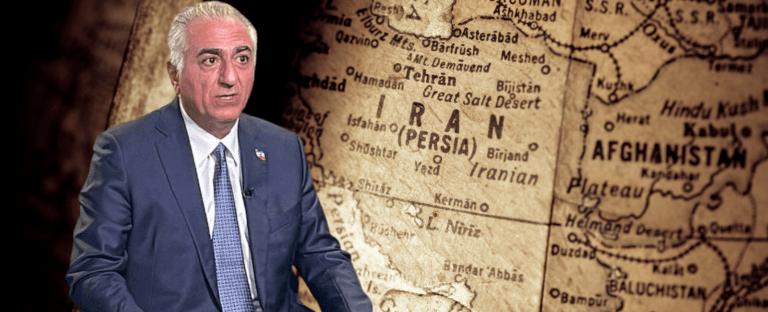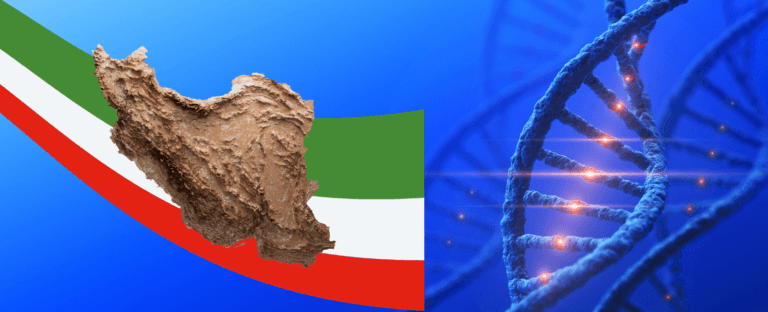The Hijab in Iran: The Islamic Republic’s Berlin Wall?
Following Mahsa Jina Amini’s death, a national movement against the Islamic Republic regime in Iran, advocating for a secular, free Iran has noticeably intensified. The symbolism for this uprising, particularly the rejection of the hijab, and the potential for unified opposition led by Crown Prince Reza Pahlavi towards establishing a pluralistic secular democracy, are explored. The regime’s oppressive foundations and the importance of military loyalty and a credible alternative for a peaceful democratic transition are highlighted. The pivotal role of the Pahlavi dynasty in mobilizing support and legitimizing political change to end regional instability is underscored.
Following the tragic demise of Mahsa Jina Amini, who suffered fatal brain injury due to brutal beating by the Islamic Republic regime’s morality police in Iran, a symbol prominently upheld by the Iranian diaspora remains: the majestic pre-Khomeini Lion and Sun flag of Iran. The “National Revolution” and the fight against the Islamic Republic have taken on new momentum. This revolution transcends gender, embodying the collective struggle of a nation to reclaim Iran and restore freedom.
The future Iran envisions itself as a secular state, free from enforced and radical ideologies, with the rule of law ensuring freedom for all. Risking their lives, young Iranians are making symbolic and revolutionary actions: they are removing their veils, sometimes setting them ablaze, and toppling the turbans of mullahs firmly yet in a non-violent way. Under the outlaw regime established by Ruhollah Khomeini, rejecting the hijab stands as one of the most significant and eloquent forms of protest. Women are demanding their rights, facing imprisonment, lashings, fines, and even death. Despite the profound significance of this act, it alone cannot topple such a dreadful regime.
Obligatory hijab oppresses half of the Iranian society (women), while sending a clear message to the other half: the regime controls everything, body and mind. The hijab, enforced upon women’s bodies, carries values antithetical to fundamental rights, thus blatantly displaying the regime’s Khomeinist colors and brazenly reducing the Iranian nation to an Ummah[1] in service of political Islam.
Nevertheless, the hijab additionally serves as a diversionary tactic. While some movements might give the impression that the fight for freedom in Iran revolves around the hijab, the mandatory veiling is merely a disastrous consequence of the rise to power of an Islamist regime that is against Iran as a nation and the Iranian identity. It represents a systemic issue, not the solution leading to the overthrow of the occupying regime. Even if, likely after Khamenei’s death, the regime was to permit minor liberties such as the removal of the hijab, it would merely signify the dawn of the Islamic Republic 2.0, a scheme to modernize appearances while preserving the current political system. Focus on the veil and its archaic laws serves to divert attention from the real struggle: the regime’s downfall. Quoting De Gaulle’s “France has lost a battle, but France has not lost the war[2],” or, in the words of Winston Churchill “Our task is not only to win the battle – but to win the war[3]”, for Iranians, the hijab represents a battle, not the war itself.
A nation that suffers under a brutal and repressive regime must rediscover its strength. Both politically and legally, their freedom depends solely on themselves. A tyrant “has no other power than the power we give him” and can harm the people “only as much as they consent to bear it”, as highlighted by Étienne De La Boétie[4]. Thus, obedience is a cornerstone of power, just as disobedience leads to its collapse.
Iran must unite and mobilize around a neutral and non-partisan representative who will convey the popular will to the world rather than defend the interests of a political party. In this regard, Iran has a historic opportunity in the exiled Crown Prince Reza Pahlavi, the heir to the dynasty that built Iran and liberated its women. Since 1979, Pahlavi has championed the nation and the interests of a politically diverse people. Realistically, he can become the guarantor and protector of a pluralistic, liberal, and humane democracy that embraces all democratic political hues of Iran. Within the opposition against the Islamic Republic regime, no other political figure enjoys broad support among Iranians[5], or holds a royal title conferred by law, coupled with the power and determination to act in accordance with democratic principles; and thereby entitled to a legitimate claim to represent the Iranian people. However, the realization of this pluralism is only possible after the regime’s fall.
For now, the diaspora plays a key role in the regime’s overthrow. Yet, various dangerous ideologies, and some individuals’ political ignorance, lack of transparency and accountability, cause the delay in forming an opposition. This will continue as long as a misunderstanding of Iran’s complex history and misinformation about the Pahlavi legacy persist. The conundrum can be remedied by accepting the Crown Prince as the political figurehead to lead this revolution that will culminate in a free and fair referendum. Even in effective and established democracies, opposition politics remain divided and tense; in the Iranian case, there is an odd insistency from one side to accentuate and exaggerate this division in western media. The intention appears to be linked to the parallel global phenomena, where a self-righteous faction employs an old political strategy, often as a means to discredit or silence opponents: to attribute fascism to any opposing viewpoint. The more accurate depiction of the political situation is that certain polarized groups wage war against the Pahlavis instead of uniting against the Islamic regime. Among them, the Marxist-Islamist terror cult Mojahedin-e-Khalq (with its front, the National Council of Resistance of Iran or NCRI), chants “death to the oppressor, Shah or Mullah”, including the “Shah” as the former Pahlavi monarchs and targeting the actual living heir, representing a mainstream current. This slogan becomes unjust and anti-democratic, besides being divisive and violent.
The Islamic Republic is built upon deception and falsehoods. To seize power, its founders utilized weapons, propaganda, and disinformation. The national revolution sparked by Mahsa’s murder has exposed the regime’s deceit, an Islamo-fascist invasion camouflaged as a normal political regime that has fostered an anti-Pahlavi narrative in academic and media circles to usurp and maintain power. This organized attack aims to drain patriotism from every Iranian heart: the ayatollahs know that acknowledging their fraud will lead the Iranian people to demand the return of the Pahlavis, with the plenitude of novel perspectives and democratic principles that Crown Prince Reza Pahlavi can introduce, spelling the end of the Islamic occupation.
Perhaps, one of the Crown Prince’s greatest strengths, as his compatriots call him a “capital” or a “national treasure”, is his role before the military.
Two vulnerabilities can converge to endanger the regime: the loyalty of the armed forces and a political alternative. A credible alternative to the Islamic Republic could attract the armed forces’ loyalty, without which the Khomeinist regime cannot forcefully maintain its power. To uproot the Islamic Republic, a defection within the system is necessary, requiring a credible commander-in-chief; similarly, to ensure a peaceful transition, establish security, prevent civil war, and restore the regional stability that existed pre-1979. This need is evidently more pressing following the October 7th attack by Hamas, a terrorist group financed by the Islamic Republic.
For Majid Tavakoli, a leading democratic scholar and political prisoner in Iran, the opposition force can only be based outside of Iran and must have a clear plan to control the military. Reza Pahlavi earned his pilot’s license in the United States, having trained as a combat pilot at the US Air Force Base in Texas. His grandfather, Reza Shah the Great, was a career military man; and his father, Mohammad Reza Shah Pahlavi, founded the world’s fifth-strongest non-atomic military[6]. Prince Reza Pahlavi carries a century of history, nothing tarnishes his personal or political record, and he sets an example of transparency and political integrity, making him the most reliable opposition figure. Endowed with a “confident and calm” character, as his father said, the Crown Prince remains faithful to the principles and values of the current diplomatic world, and has been advocating for civil disobedience over decades. With a traditional legitimacy, as defined by Max Weber, both in and outside of Iran, he can earn the respect and loyalty of the armed forces, and as a commander-in-chief, peacefully guide Iran toward a sustainable secular democracy.
In conclusion, the Pahlavi dynasty and the patriotism it inspires constitute the real “Berlin Wall” of the anti-Iran regime. A nation united behind the Crown Prince of Iran, Reza Pahlavi, represents the only hope to end tyranny in Iran, the source of the current bloodshed ravaging the region. To achieve this, it is necessary to legitimize the political alternative—the exiled representative of the people—and reassure the rest of the world that Iran will be stable and peaceful. This articulates the rationale for the founders of the Islamic Republic to continuously tyrannize and discredit the supporters of the Pahlavis for over four decades[7], and for the efforts of specific opposition factions to exert control over the exiled Crown Prince and prevent him from any leadership role, like the recent flawed “coalition” intended to do.
Pahlavi is the greatest fear of the Tyrant of Tehran.
[1] In the context of Islamism and the Islamic Republic, Ummah is a global Muslim community where Muslim identity prevails over nationality, religious and atheistic beliefs, and any other. The Islamic Republic of Iran wants to export its ideology and the ‘Islamic Revolution’ to other countries, ultimately form a universal Ummah and assume the leadership of it.
[2] Subtitle from a written proclamation published in 1940 in London and other cities in England.
[3] From the first broadcast as Prime Minister in 1940.
[4] A 16th-century French jurist and humanist scholar, known for his essay entitled: Discours de la servitude volontaire (Discourse of Voluntary Servitude).
[5] Iranians inside Iran have limited ways to show their support for a political figure, such as graffiti on walls and anonymous videos. When they are able to show that support, it has only been directed to Reza Pahlavi and the dynasty that he represents. Examples of slogans: “Who is the King of Iran? Reza Pahlavi”; “Iran without a King has no accountability”; “King of Iran, return to Iran”; “Crown Prince, will you come and help us”.
[6] Andrew Scott Cooper, The Fall of Heaven: The Pahlavis and the Final Days of Imperial Iran(New York: Picador, 2018), p.23, 270.
[7] Thousands of kilometers away under the Islamic Republic, supporters of the Pahlavi dynasty are targeted, imprisoned, tortured, or hanged. They are unable to communicate with Western media, receive no murals in their honor, nor are they awarded any prizes. They survive, persevere, or die away from the media spotlight. In recognition of their struggles, it is pertinent to pay homage, among many others, to Fatemeh Sepehri, Reza Norouzi, Manouchehr Bakhtyari, Kian (Mohammad) Hosseini, Khaled Pirzadeh, Soheila Hejab, Mahboubeh Rezaei, and Majid Reza Rahnavard. The latter was executed by the regime, after suffering the burning and breaking of his forearm, which bore the emblem of the pre-Khomeini Lion and Sun of Iran.







